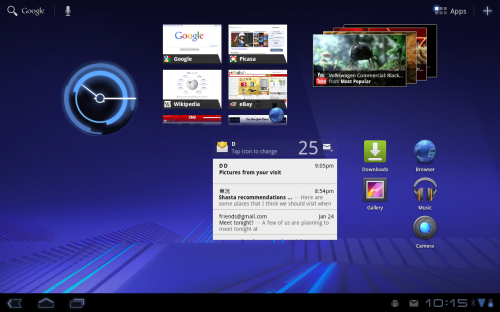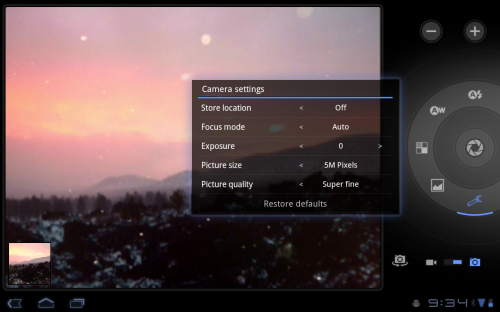
In an Android Developers blog post yesterday, Android SDK tech lead Xavier Ducrohet announced that the full SDK for Android 3.0 is now available to developers.
The APIs are final, and developers can start creating apps for this new platform and publish them to Android Market.
Android 3.0, targeted at new tablet devices such as the Motorola Xoom, includes several new features for users and developers. These include a a new “holographic” user interface (UI) designed from the ground up to take advantage of larger displays.
According to Google, “the new UI brings fresh paradigms for interaction, navigation, and customization and makes them available to all applications – even those built for earlier versions of the platform. Applications written for Android 3.0 are able to use an extended set of UI objects, powerful graphics, and media capabilities to engage users in new ways”.
New to Android 3.0 is the System Bar located at the bottom of the screen that displays notifications, system status and navigation buttons. It also includes a Recent Apps list that lets you see the tasks underway and quickly jump from one app to another. While watching videos in full screen, you can dim the System Bar in a new lights out mode.
At the top of the screen lies the Action Bar, which is present whenever an app is running. It lets you access options, navigation and widgets. However, the content, theme and other properties in the Action Bar are managed by applications, rather than the underlying operating system.
The UI includes five customizable home screens, with visual cues and drop shadows that improve visibility when adjusting the layout of shortcuts and widgets. You also get a redesigned keyboard with a Tab key, improved text selection and copy-and-paste function.
The bundled apps have also been beefed up. The Android browser now sports an incogito mode for private browsing, a unified view for bookmarks and browsing history, as well as enhanced browsing on non-mobile sites. The Contacts, E-mail and Camera applications have also been tweaked to take advantage of the larger screen estate on tablet devices.

For developers, Android 3.0 offers a new framework for developing new UI widgets that support features such as 3D stack, search box, a date/time picker and popup menu, among others. The new platform, which supports multicore processors, also features hardware-accelerated 2D graphics and the Renderscript 3D graphics engine for generating 3D effects for applications, wallpapers and carousels.

More importantly, Android 3.0 is fully compatible with older Android apps which will work in the new holographic UI theme without code changes, according to Google.
Portions of this article are modifications based on work created and shared by the Android Open Source Project and used according to terms described in the Creative Commons 2.5 Attribution License.




